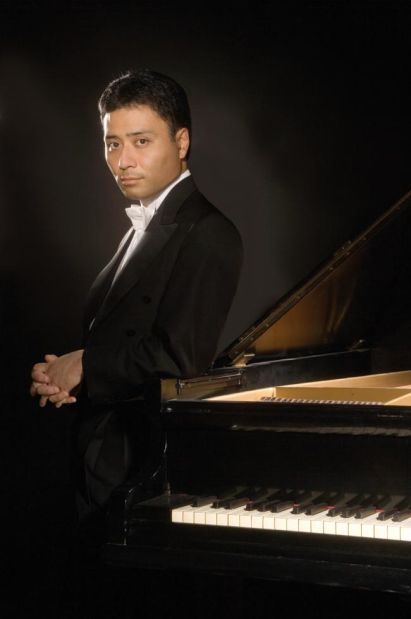Turn on a recording of the Rach 3 Piano Concerto and you will pretty much get the gist of its breadth and beauty.
But to truly appreciate the sheer technical difficulty of pulling off Rachmaninoff’s Piano Concerto No. 3, you need to see it performed live.
No offense to the folks sitting in the balcony at Sunday’s Tucson Symphony Orchestra concert but you only experienced the surface of Jon Nakamatsu’s Rach 3. The excitement was watching the California pianist scale the keyboard sometimes at unfathomable tempos playing a dizzying amount of notes with precious few chances to catch his breath.
Here’s my advice: The next time someone of Nakamatsu’s enormous talent comes to town with the Rach 3 in tow, spring for the more expensive seats. Insist you are on the piano side of the stage, preferably center no more than a dozen rows deep, with a birdseye view of the pianist’s hands.
That viewpoint Sunday afternoon allowed us to see how Nakamatsu balanced the piece’s physical and mental demands.
I won’t say Nakamatsu made it look easy. He was sweating up there — a couple times with the precious seconds he had to breath he grabbed a handkerchief from his suit pocket and wiped sweat from his forehead. But he made it look natural. He has the piece committed to memory — it’s what earned him the Gold Medal in the 1997 Van Cliburn International Piano Competition — but watching midway into the first movement where the flurry of notes come in unimaginable waves you still can’t help but wonder how he can keep that much music in his fingers.
The Rach 3 opens with a quiet exchange between the orchestra and soloist that segues from gentle taccota-like quivers to an explosive cadenza. That’s where we saw Nakamatsu at his best, matching the orchestra’s ornamentation with flurries of fireworks especially in the first movement’s cadenza.
The piano sang beneath his fingers, with cascading choruses that harmonized with the strings before going off on their own to steal the show. During the prolonged solo passage toward the end of the first movement, an audience member’s cell phone rang. You could hear it echo through the hall, but Nakamatsu played through as if it never happened.
The orchestra, under the baton of guest conductor Peter Bay, was a little off its game. At times, it seemed out of sync with Nakamatsu. In one section of the first movement, you couldn’t hear the piano over the blast of brass, and the strings early on seemed to be going at different paces, as if they had not all started together.
At the end of the 40-minute concerto, the audience that nearly filled Tucson Music Hall Sunday afternoon gave Nakamatsu a standing ovation complete with a chorus of bravos, some of them accompanied by shouts of “Yeah!” — a symphony orchestra concert’s polite version of a rock show’s “whoop-whoop.” He stuck around a few minutes longer to play a beautiful Chopin Étude as an encore.
Sunday’s concert also included the delightful “Javelin” by Micheal Torke and Dvorák’s Symphony No. 7.





